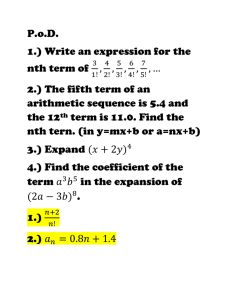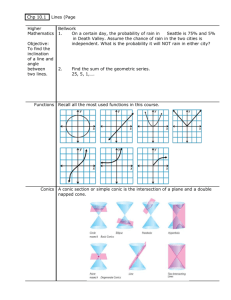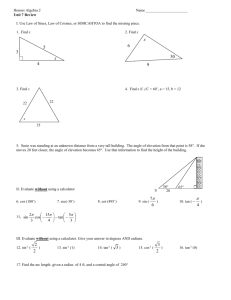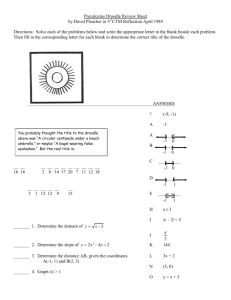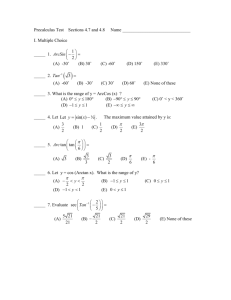Chapter 10 Topics in Analytical Geometry 10.1 Line
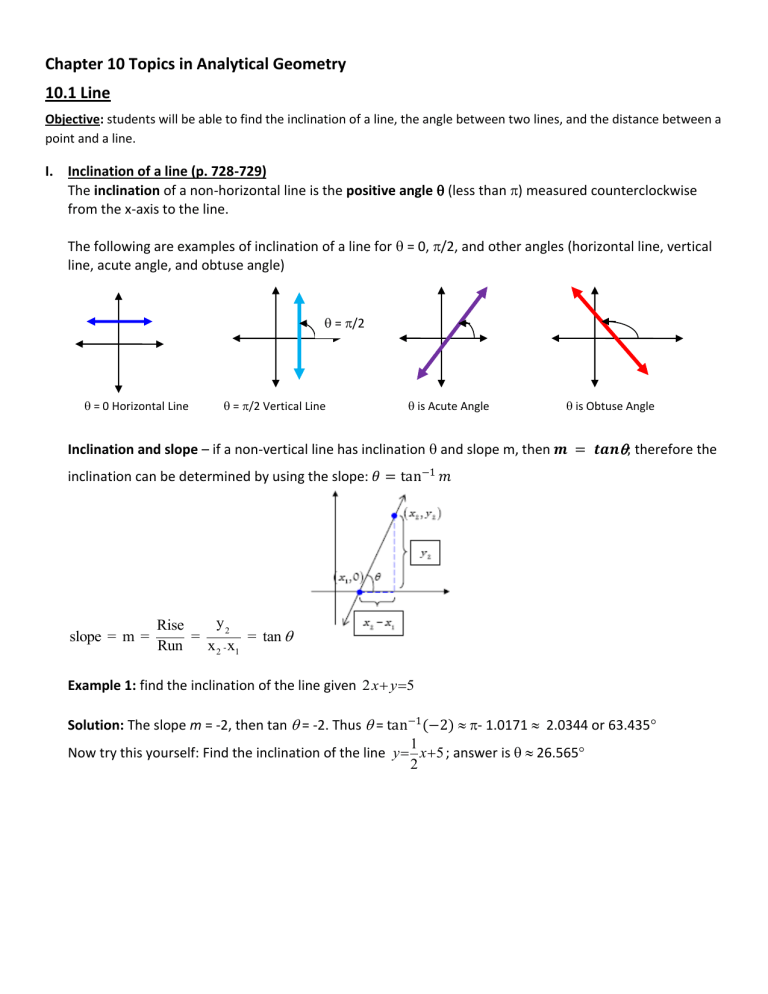
Chapter 10 Topics in Analytical Geometry
10.1 Line
Objective: students will be able to find the inclination of a line, the angle between two lines, and the distance between a point and a line.
I.
Inclination of a line (p. 728-729)
The inclination of a non-horizontal line is the positive angle (less than ) measured counterclockwise from the x-axis to the line.
The following are examples of inclination of a line for
= 0,
/2, and other angles (horizontal line, vertical line, acute angle, and obtuse angle)
=
/2
= 0 Horizontal Line
Inclination and slope
= /2 Vertical Line
is Acute Angle
– if a non-vertical line has inclination
and slope m, then
is Obtuse Angle
= 0 Horizontal line 𝒎 = 𝒕𝒂𝒏 ; therefore the inclination can be determined by using the slope: 𝜃 = tan −1 𝑚 e slope = m =
Rise
Run
= y
2 x x
2
-
1
= tan
Example 1: find the inclination of the line given 2
5
Solution: The slope m = -2, then tan
= -2. Thus
= tan −1 (−2)
- 1.0171
2.0344 or 63.435
Now try this yourself: Find the inclination of the line y
1
2 x
5 ; answer is
26.565
II.
The angle between two lines
If two non-perpendicular lines have slopes m
1
, and m
2
, the angle between the two lines is tan
1 tan
2
m
1 m
2
By External Angle Theorem:
2
thus tan
tan
2
tan
1 tan
1
2
1
( where
2
1
)
If we rewrite the equation by using slope and inclination relation, therefor tan
m
1
m
2
1
Example 2 : Find the angle between the lines given by 3 x 2 8 and 4 x 5 1
Solution : m
1
= -3/2, m
2
= 4/5 thus tan
(One easy way to find the slope of a given line ax by c 0 , one easy way is m
a b
III.
The Distance Between a point and a line
)
The distance d between the point (x
1
, y
1
) and the line is Ax By C 0 is defined as d =
Ax
1
By
1
C
A
2
B
2
(note that if (x
1
, y
1
) is on the line, then d = 0)
Example 3 : Find the distance between the point (2, 3) and the line 𝑥 − 4𝑦 = 0
Solution: d
(2) 4(3)
1
2
10
2 17
10 17
17
IV.
Application of the distance formula between a point and a line
Example 4: Given a triangle with vertices A(-1, 2), B(2, 3), and C(1, -1), (a) find the altitude from B to line segment formed by vertices A and C and (b) the area of the triangle ABC
Solution:
(a) The altitude of from B to the line segment AC is the distance from B to the line AC (i.e. you draw a perpendicular line from B to AC, that distance is altitude) we need to find the equation for the line AC first.
The line segment AC has the equation : 3 x
2 y
Thus the altitude (distance from B to AC) is h
13
3
2
2
2
(b) The area of the triangle ABC is
1
2
, the length (distance) between point A and C is b
( x
1
x
2
)
2
( y
1
y
2
)
2
2 2
13
Thus the area is
1
2
13 13
13
2
